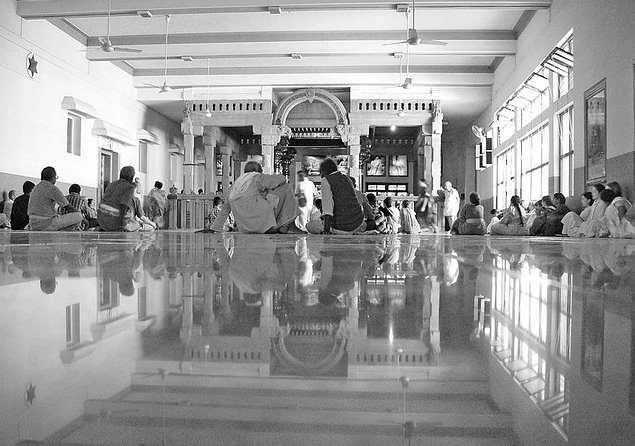About Ramana Maharshi

Sri Ramana Maharshi (Tamil:ரமண மஹரிஷ) (December 30, 1879 April 14, 1950), born Venkataraman Iyer, was a Hindu spiritual master (“jnani”). He was born to a Tamil-speaking Brahmin family in Tiruchuzhi, Tamil Nadu. After experiencing at age 16 what he later described as liberation (moksha), he left home for Arunachala, a mountain considered sacred by Hindus. He lived at the mountain for the rest of his life. Although born a Brahmin, he declared himself an “Atiasrami”, a Sastraic state of non-attachment to anything in life and beyond all caste restrictions. The ashram that grew around him, Sri Ramana Ashram, is situated at the foothill of Arunachala, to the west to the pilgrimage town of Tiruvannamalai.
Sri Ramana Maharshi maintained that the purest form of his teachings was the powerful silence which radiated from his presence and quieted the minds of those attuned to it. He gave verbal teachings only for the benefit of those who could not understand his silence. His verbal teachings were said to flow from his direct experience of Atman as the only existing reality. When asked for advice, he recommended self-enquiry as the fastest path to moksha. Though his primary teaching is associated with Non-dualism, Advaita Vedanta, and Jnana yoga, he recommended Bhakti to those he saw were fit for it, and gave his approval to a variety of paths and practices
Sri Ramana Ashram

Sri Ramana Ashram also known as Sri Ramanasramam is the ashram, which was home to modern sage and Advaita Vedanta philosopher, Ramana Maharishi from 1922 till his death here in 1950. It is situated at the foot of the Arunachala hill, to the west of the Tiruvannamalai, Tamil Nadu, where thousands of seekers flocked to be in his presence and later after he died in 1950 his samadhi shrine continues to attract devotees from all over the world
The ashram gradually grew in its present location after Ramana Maharshi settled near the Samadhi shrine of his mother Alagammal, who died on May 19, 1922. In the beginning, a single small hut was built there. By 1924 two huts were set up, one opposite the samadhi and the other to the north.
Amongst its early western visitors were British writer Paul Brunton in 1931, who is credited with introducing Ramana Maharshi to the West through his books “A Search in Secret India” (1934) and “The Secret Path”. Writer W. Somerset Maugham visited the ashram in 1938, and later used Ramana Maharshi as the model for the holy man, Shri Ganesha in his novel,The Razors Edge (1944). Other visitors included Swami Sivananda, Paramahamsa Yogananda, Alfred Sorensen (Sunyata) and Wei Wu Wei amongst others.
Arthur Osborne stayed at the Ashram for twenty years, and edited the Ashram’s journal, The Mountain Path, besides writing several book on Ramana Maharshi and his teachings. Mouni Sadhu spent several months at the Ashram in 1949. David Godman came to the ashram in 1976, and has since written or edited fourteen books on topics related to Sri Ramana Maharshi. He continues to live near the ashram.
Niranjanananda Swami, brother of Ramana Maharshi, who had moved to the ashram along with his mother in 1916, stayed at the ashram for the rest of his life and handling its management. His son and grandson looked after the ashram in turn.








































